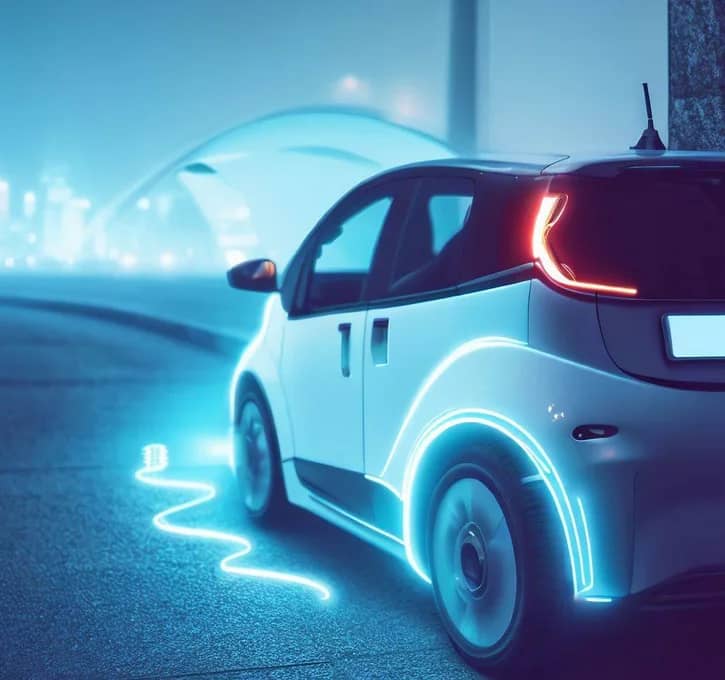Axles, also known as differentials, are an essential component enabling electric vehicles (EVs) to smoothly transmit torque from motors to wheels. As EV drivetrains and capabilities advance, purpose-built axles help unlock their performance potential. This article explores how EV axles work, design innovations, maintenance best practices, and the future of differential technology.
What Are Electric Vehicle Axles?
EV axles, or differentials, are mechanical assemblies connecting the drive motors to the wheels. Their core purpose is managing the distribution of motor power to the wheels to accommodate differences in rotational speed, especially when maneuvering turns.
Inside the axle assembly, gears and shafts split and direct rotational forces while compensating for differing wheel speeds. This allows EVs to corner smoothly without wheel slippage or jarring drivetrain binding.
Key Parts of an Electric Vehicle Axle
While designs vary across makes and models, some typical components inside EV axles include:
- Ring Gear – Large outer gear that receives power from the electric motor via smaller pinion gear.
- Pinion Gear – Smaller input gear meshed with ring gear to introduce motor power into the differential.
- Spider Gears – Side gears transferring torque from ring gear to left and right axle shaft outputs.
- Cross Shafts – Shafts allowing spider gears to spin independently on either side.
- Carrier – Housing that encloses the gear train and allows necessary movement.
- Bearings – Reduce friction between moving parts under high loads.
- Axle Shafts – Output shafts transferring torque from spider gears to the wheels.
Functions of Axles in Electric Vehicles

EV axles provide several important functions:
- Split Torque – Divide motor torque evenly between left and right wheels when driving straight.
- Allow Speed Differentials – Enable outside and inside wheels to spin at different rates when turning corners.
- Change Direction – Redirect torque flow 90 degrees from motor orientation to the wheels.
- Modify Gear Ratios – Use gearing to multiply or reduce torque as needed.
- Support Loads – Bear the weight of the vehicle through output axle shafts.
- Enable Differential Locking – Can lock to send equal torque to both wheels for increased traction.
Unique Axle Designs for Electric Vehicles
Several innovative axle types are tailored for EVs:
Single Speed Reduction Gear
Uses minimal gear stages for compactness and low friction. Enables regenerative braking.
Multi-speed Reduction Gear
Provides multiple gear ratios to optimize torque across speed ranges. Adds complexity.
Direct Drive
Eliminates differential gearing entirely for simple direct motor-to-wheel coupling. Only works for single motors.
Independent Drive Axles
Separate axles for front and rear allow precise torque vectoring at each end.
Maintenance Tips for EV Axles
Proper axle maintenance ensures lasting performance:
- Inspect for leaks indicating compromised seals or vent plugs. Re-grease if found.
- Listen for hums, growls, or whines during turns as signs of gear damage.
- Feel for excessive vibration suggesting worn bearings. Replace immediately if detected.
- Check lubricant levels periodically and top up when low to prevent mechanical wear.
- Change lubricant at recommended intervals to prevent viscosity breakdown.
- Examine axle boots for cracking or detachment which risks contaminant ingress.
Axle Design Showcases in Today’s EVs
- Tesla Model 3 – Uses tough cast aluminum housing and proprietary lubricant. Nearly maintenance-free.
- Ford F-150 Lightning – Truck-duty 9.75-inch axle with electronic locking feature.
- Rivian R1T – Advanced quad motor drive with independent front and rear axles enabling torque vectoring.
- Nissan Leaf – Durable gearset designed to handle high motor torque.
- Lucid Air – Compact single-speed gear reduction axle aids efficiency.
The Future of Electric Vehicle Axle Technology
Ongoing innovation aims to make EV axles even more robust and efficient:
Magnetic Differentials
Replace mechanical gears with magnetic systems to vary torque distribution. Reduces friction.
Hydraulic Differentiation
Uses hydraulic pumps and valves to control wheel speed differentials with no gears.
Structural Batteries
New battery designs integrate into chassis for reinforcement and weight savings.
Liquid Cooling
Advanced cooling systems counteract heat from high sustained motor torque.
Predictive Control
Onboard computers proactively prime axles for upcoming maneuvers using navigation data.
Integrated Sensing
Smart sensors will provide real-time axle diagnostics to predict and prevent failures.
Conclusion
As the drivetrain heart, axles enable EVs to adeptly handle straight-line acceleration as well as smooth cornering. Purpose-built gearing, durable housing, and robust bearings allow axles to transfer massive motor torque efficiently. With ongoing design enhancements, the humble axle will continue advancing in lockstep with EV capabilities.
Text.
Text.
